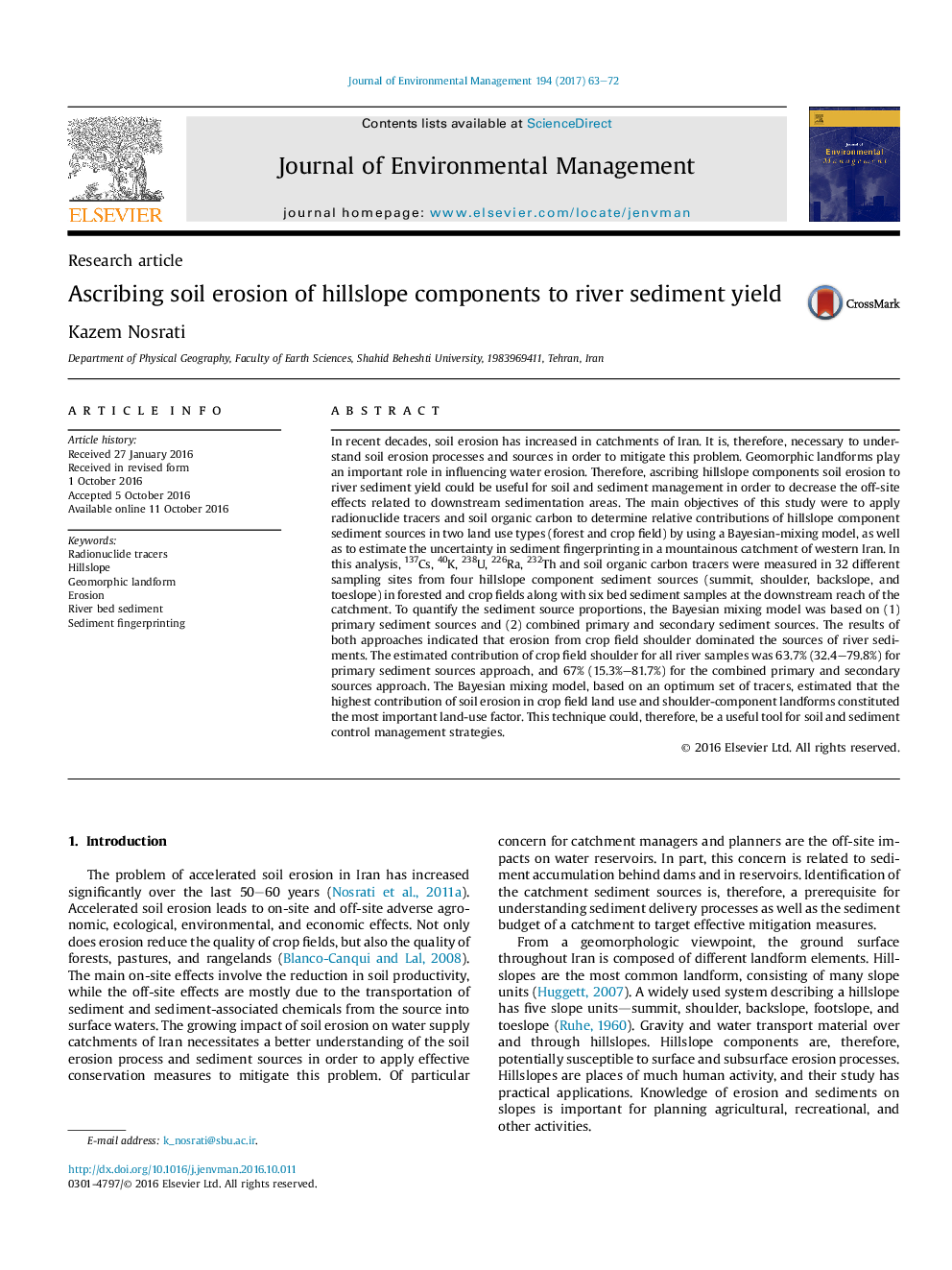| Article ID | Journal | Published Year | Pages | File Type |
|---|---|---|---|---|
| 5116919 | Journal of Environmental Management | 2017 | 10 Pages |
â¢The radionuclide tracers were used to quantify sediment in hillslope components.â¢Two approaches: primary and combined primary and secondary sediment sources were used.â¢The Bayesian model was used to assess the uncertainty of sediment sources.â¢Findings reveal the importance of crop field shoulder source in sediment yield.
In recent decades, soil erosion has increased in catchments of Iran. It is, therefore, necessary to understand soil erosion processes and sources in order to mitigate this problem. Geomorphic landforms play an important role in influencing water erosion. Therefore, ascribing hillslope components soil erosion to river sediment yield could be useful for soil and sediment management in order to decrease the off-site effects related to downstream sedimentation areas. The main objectives of this study were to apply radionuclide tracers and soil organic carbon to determine relative contributions of hillslope component sediment sources in two land use types (forest and crop field) by using a Bayesian-mixing model, as well as to estimate the uncertainty in sediment fingerprinting in a mountainous catchment of western Iran. In this analysis, 137Cs, 40K, 238U, 226Ra, 232Th and soil organic carbon tracers were measured in 32 different sampling sites from four hillslope component sediment sources (summit, shoulder, backslope, and toeslope) in forested and crop fields along with six bed sediment samples at the downstream reach of the catchment. To quantify the sediment source proportions, the Bayesian mixing model was based on (1) primary sediment sources and (2) combined primary and secondary sediment sources. The results of both approaches indicated that erosion from crop field shoulder dominated the sources of river sediments. The estimated contribution of crop field shoulder for all river samples was 63.7% (32.4-79.8%) for primary sediment sources approach, and 67% (15.3%-81.7%) for the combined primary and secondary sources approach. The Bayesian mixing model, based on an optimum set of tracers, estimated that the highest contribution of soil erosion in crop field land use and shoulder-component landforms constituted the most important land-use factor. This technique could, therefore, be a useful tool for soil and sediment control management strategies.
